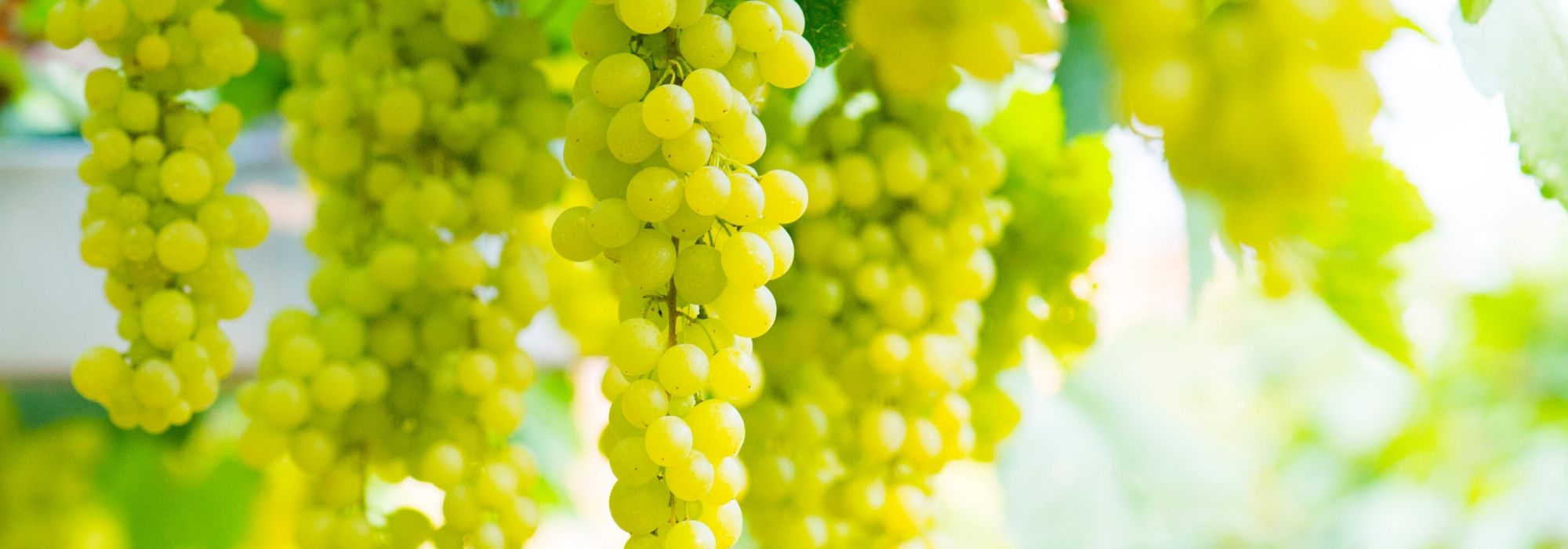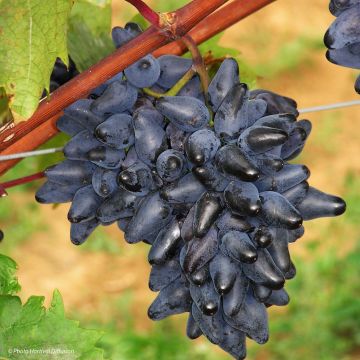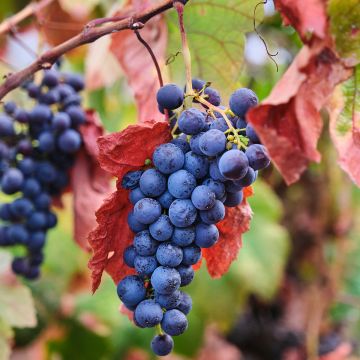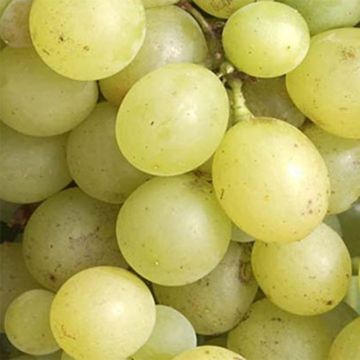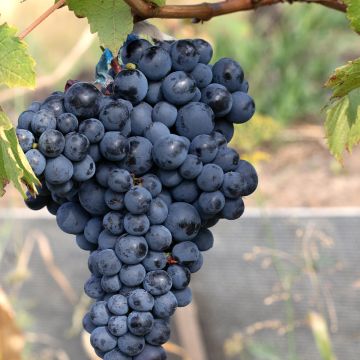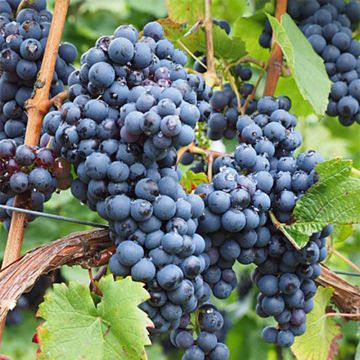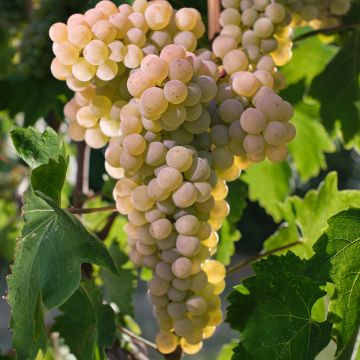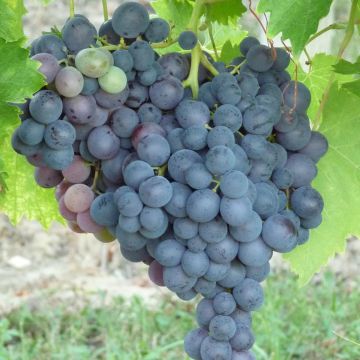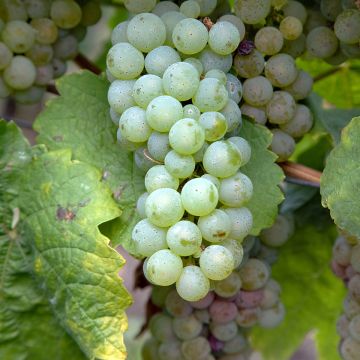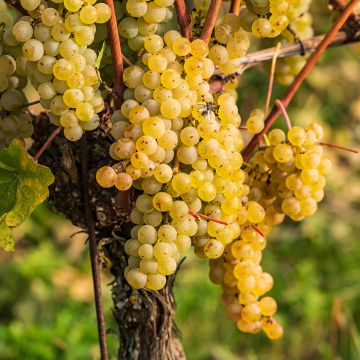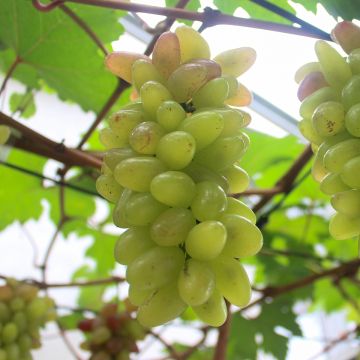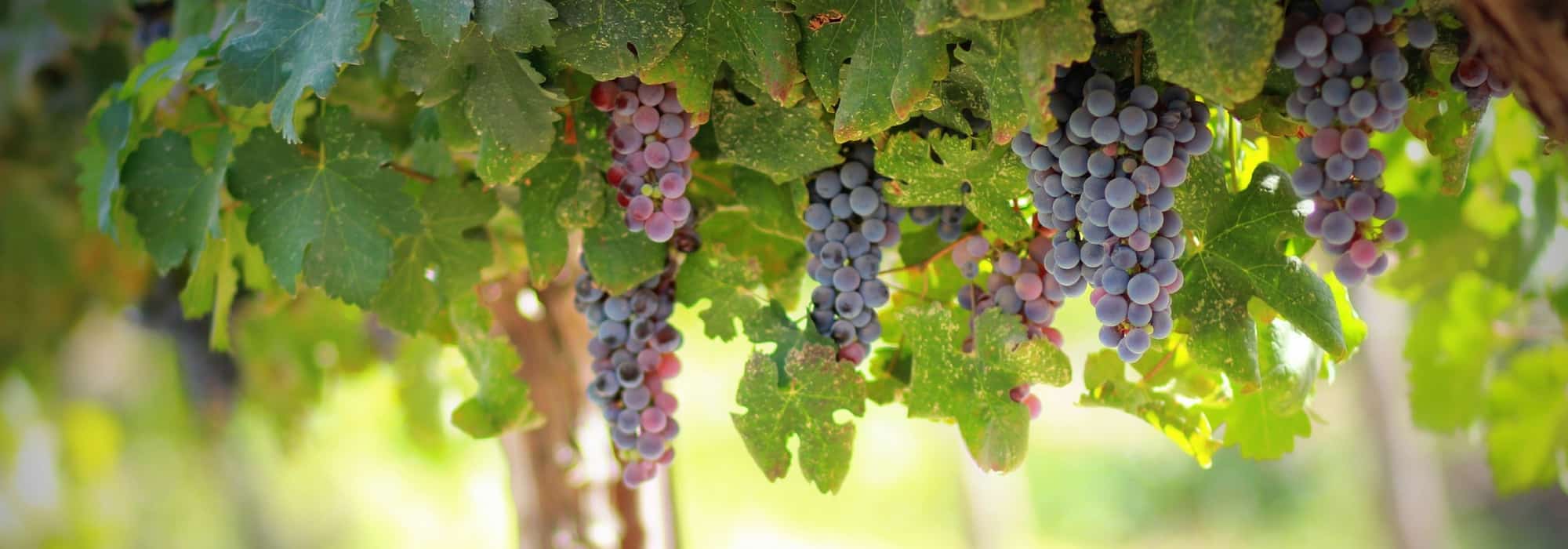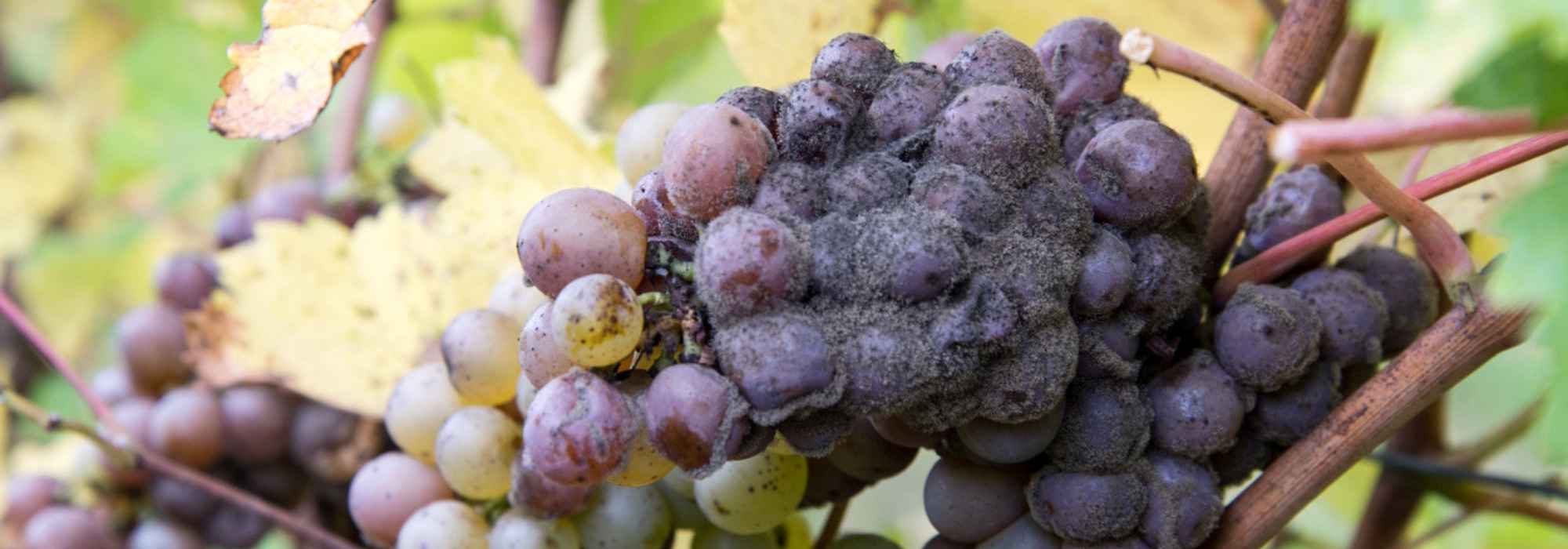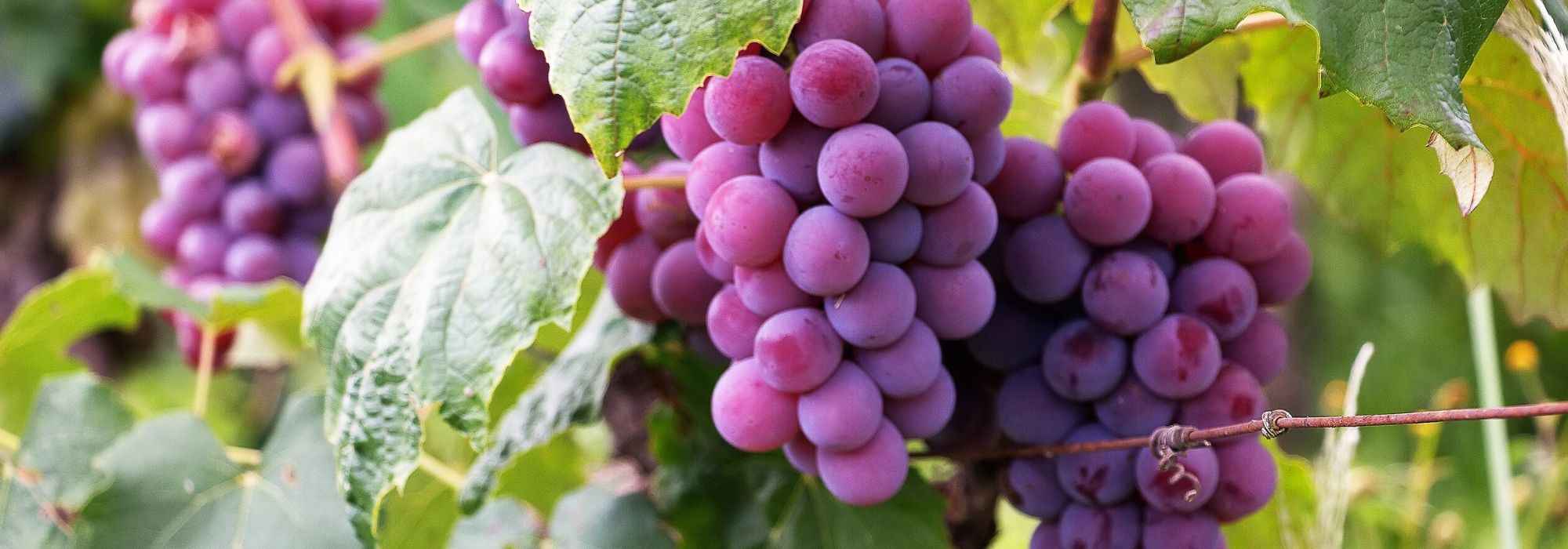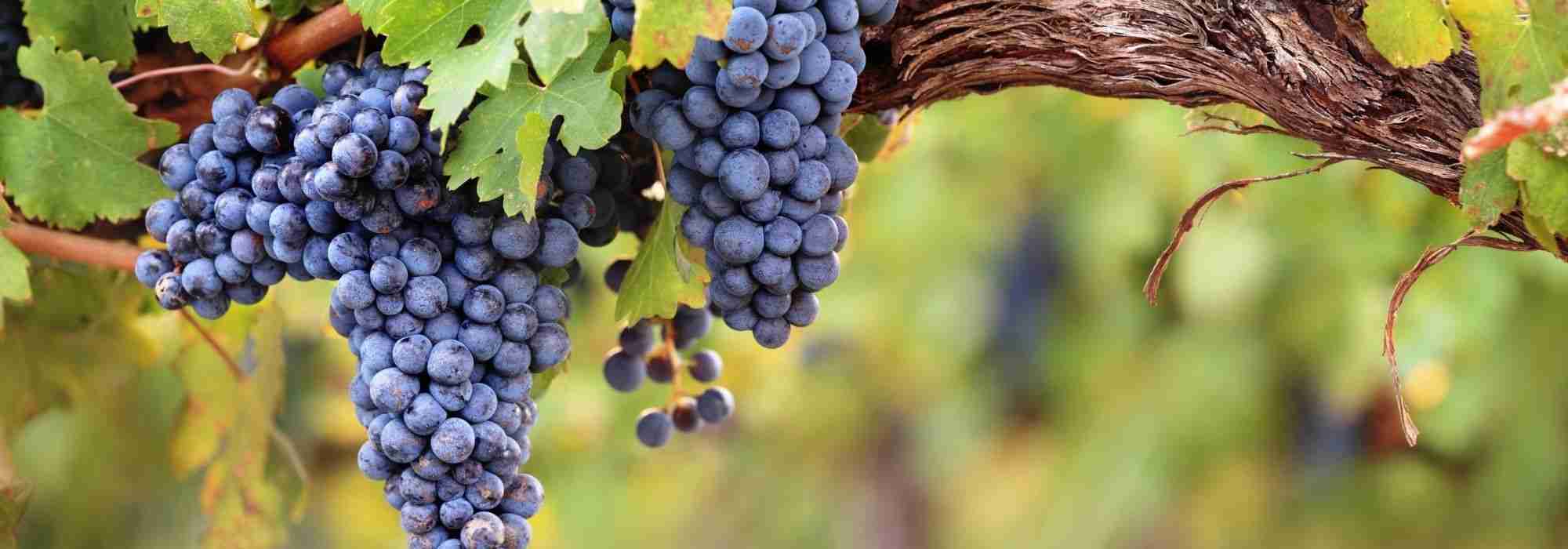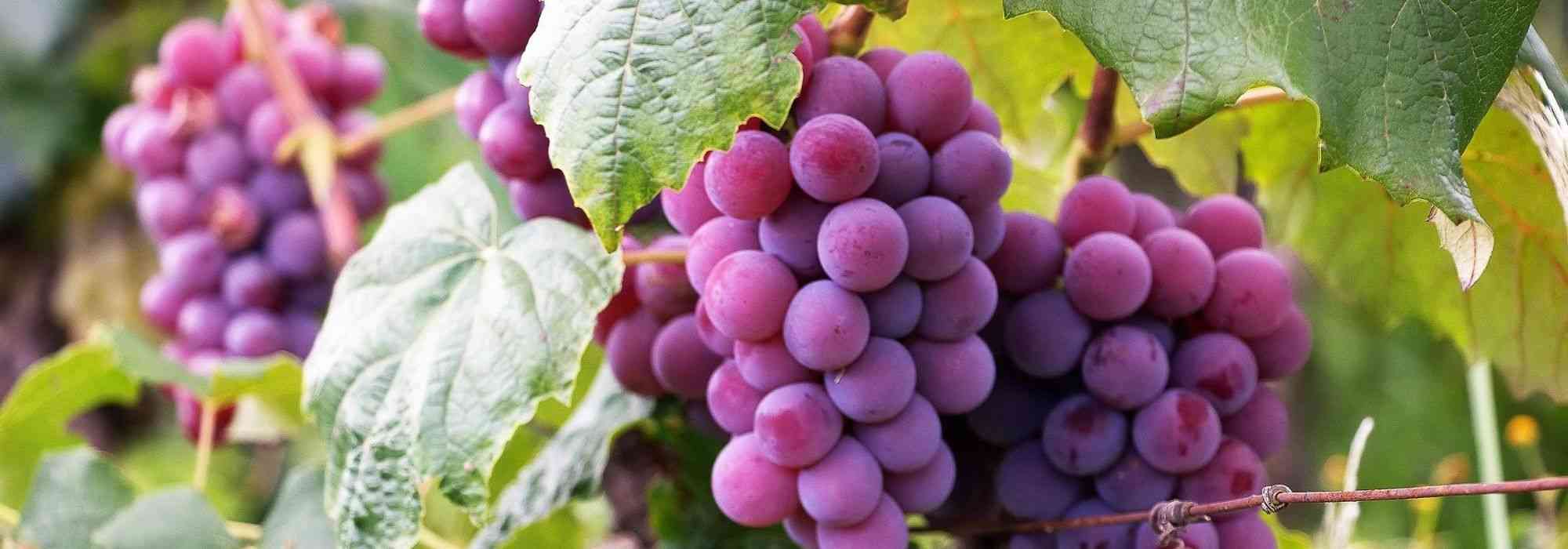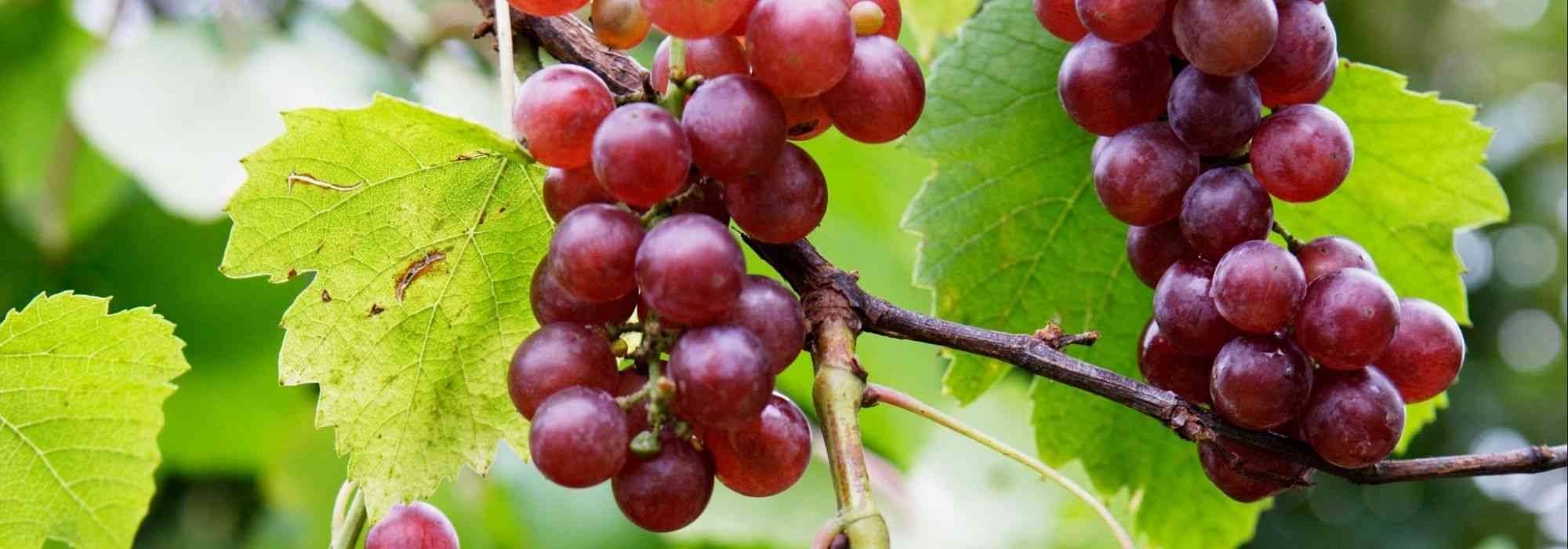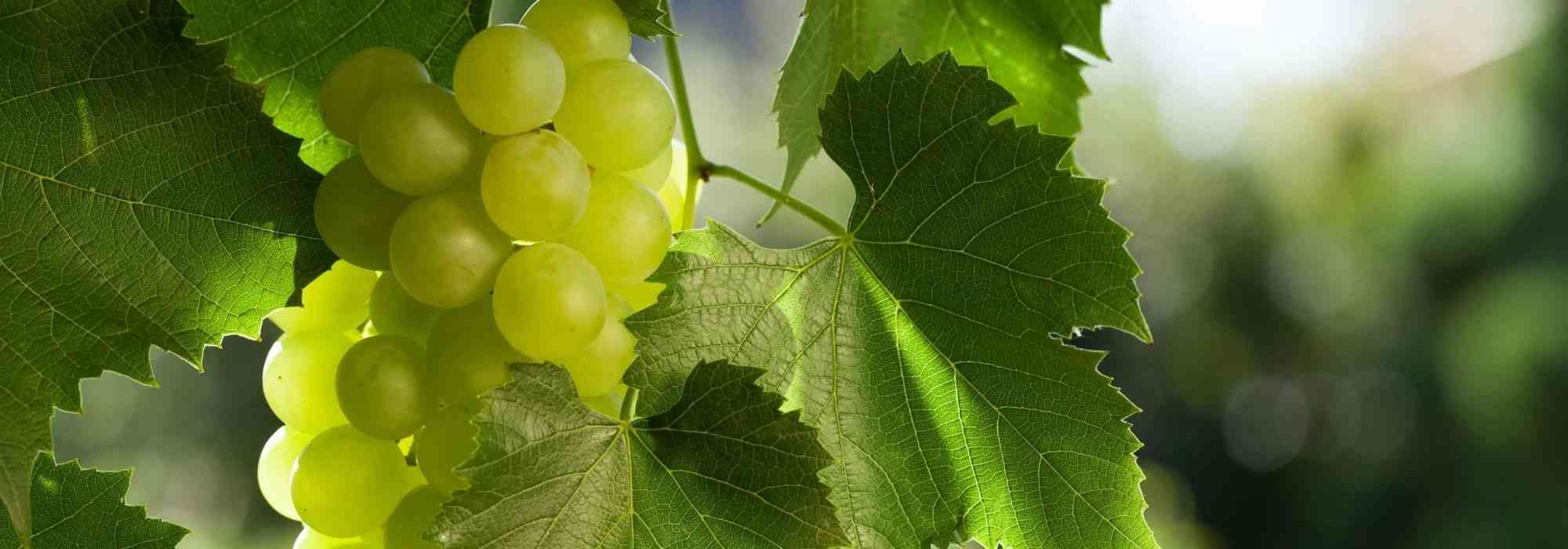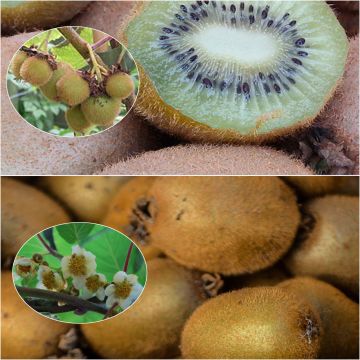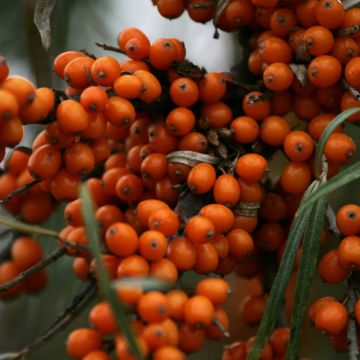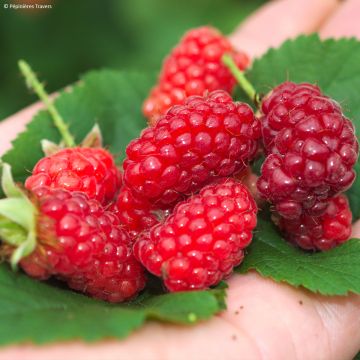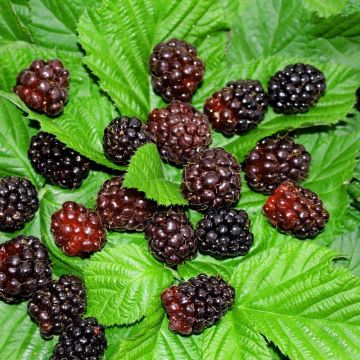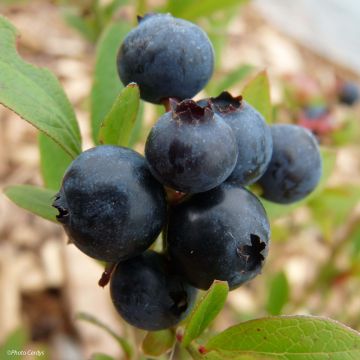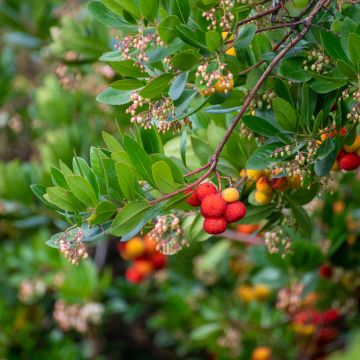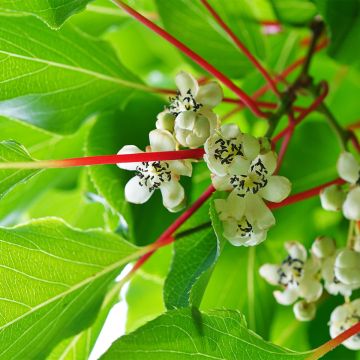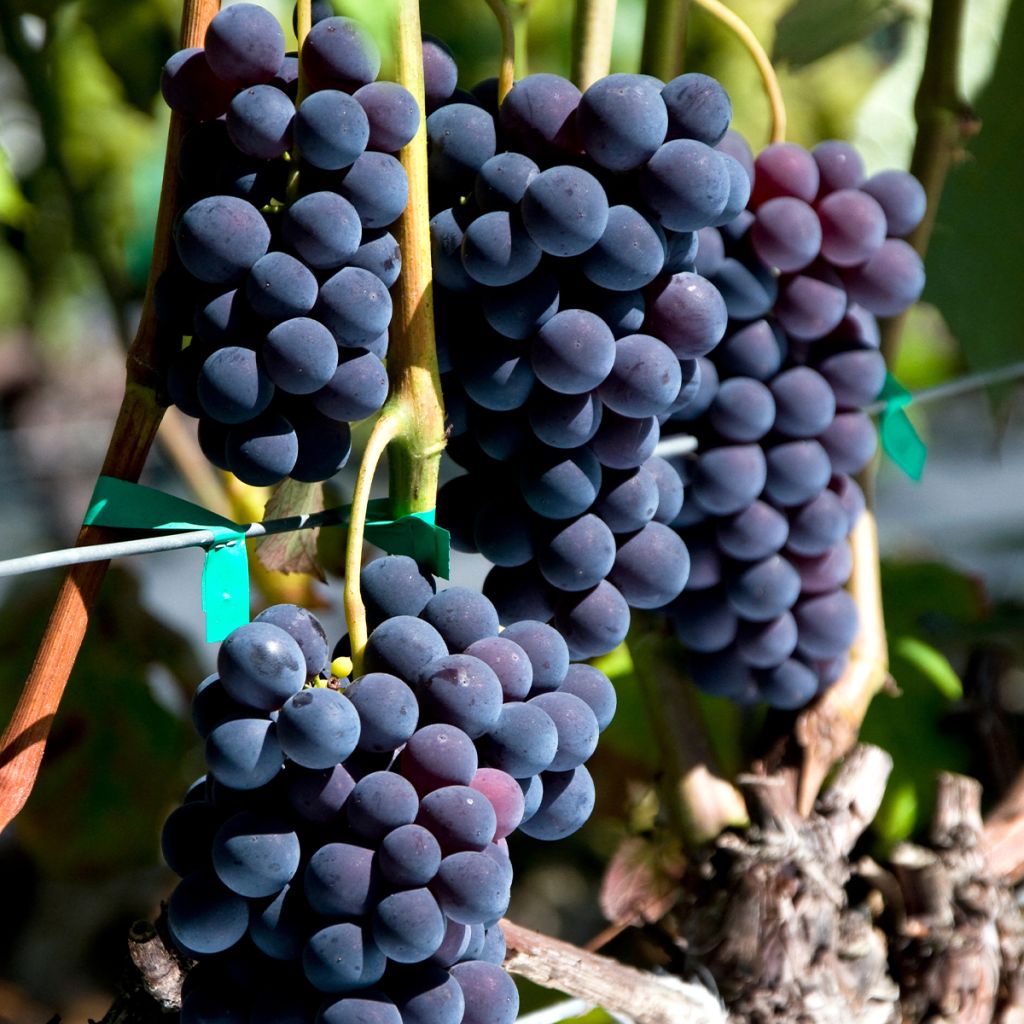

Vitis vinifera Venus - Grape Vine
Vitis vinifera Venus - Grape Vine
Vitis vinifera VENUS®
Common Grape Vine, European Grape, Wine Grape
Hello, purchased last year, the vine was beautiful. The plant is very vigorous. This year, it has grown so much that it has covered half of the pergola. However, it got sick and the fruits are full of pips. We are really disappointed with this purchase, as we thought it was disease-resistant and seedless.
AnneCaro, 22/08/2024
Special offer!
Receive a €20 voucher for any order over €90 (excluding delivery costs, credit notes, and plastic-free options)!
1- Add your favorite plants to your cart.
2- Once you have reached €90, confirm your order (you can even choose the delivery date!).
3- As soon as your order is shipped, you will receive an email containing your voucher code, valid for 3 months (90 days).
Your voucher is unique and can only be used once, for any order with a minimum value of €20, excluding delivery costs.
Can be combined with other current offers, non-divisible and non-refundable.
Home or relay delivery (depending on size and destination)
Schedule delivery date,
and select date in basket
This plant carries a 6 months recovery warranty
More information
We guarantee the quality of our plants for a full growing cycle, and will replace at our expense any plant that fails to recover under normal climatic and planting conditions.
Description
The Venus vine is a variety of dessert grape of American origin, useful for its good resistance to the usual vine diseases. It is of medium vigour and can climb up to 3m (10ft) when trained on a trellis. From August, it produces fairly large black, seedless, very sweet grapes, delicious fresh or as fruit juice. Venus is resistant to cold and will grow in any ordinary, well-drained, neutral to moderately chalky soil, in a sunny position.
The grape vine (Vitis vinifera) grew wild over 5000 years ago in North and Central America, Europe, and Central and Eastern Asia. The subspecies sylvestris still exists, it is a climber growing in the edge of forests and capable of reaching great heights in trees. The current varieties are related to the subspecies vinifera (although there are other cultivated species, but very few).
"Venus" is a dessert grape vine of American origin. It is an interspecific hybrid, carrying genes from Vitis vinifera, the "classic" grape, and Vitis labrusca, an American botanical species, known as the Fox Grape, with musky grape. This cross (Alden x New York 46000) was obtained by Jim N. Moore as part of a vine hybridisation program at the University of Arkansas in Fayetteville in the mid-1960s. Surprisingly, this program produced several varieties with names of planets (Mars, Jupiter, Neptune...).
The result of this cross is a variety with many advantages. The first is its good resistance to the usual vine diseases, which limits the need for treatment. The second is the absence of seeds in the berries, although in some years, especially under stress, a few soft seeds may form, but they can be eaten. Finally, and most importantly, it produces delicious grapes!
This vine is of medium vigour and can grow up to 3m (10ft) tall on a support such as a trellis or arbour. In June, the green-yellow flowering of this self-fertile variety then develops into long clusters of black (dark purple) grapes, quite large, especially for a seedless variety, occasionally with thick skin. It is an early variety, ripening as early as August. These fleshy berries are very sweet, with a muscat and musky taste. They are excellent raw or as juice.
The Venus grape is easy to grow, especially as it is highly resistant to various vine diseases such as mildew, powdery mildew, and botrytis. In general, grapes are rich in B vitamins and a source of fibre and manganese, well-supplied with antioxidants. They are also believed to play a role in the prevention of cardiovascular diseases, and above all, they are a healthy, natural, and delicious dessert. To enjoy different flavours, plant a white grape variety like Perlette alongside it, with a muscat taste and also virtually seedless. And why not a raspberry, preferably a perpetual one, like Marastar, to prepare delicious fruit salads in summer.
Vitis vinifera Venus - Grape Vine in pictures
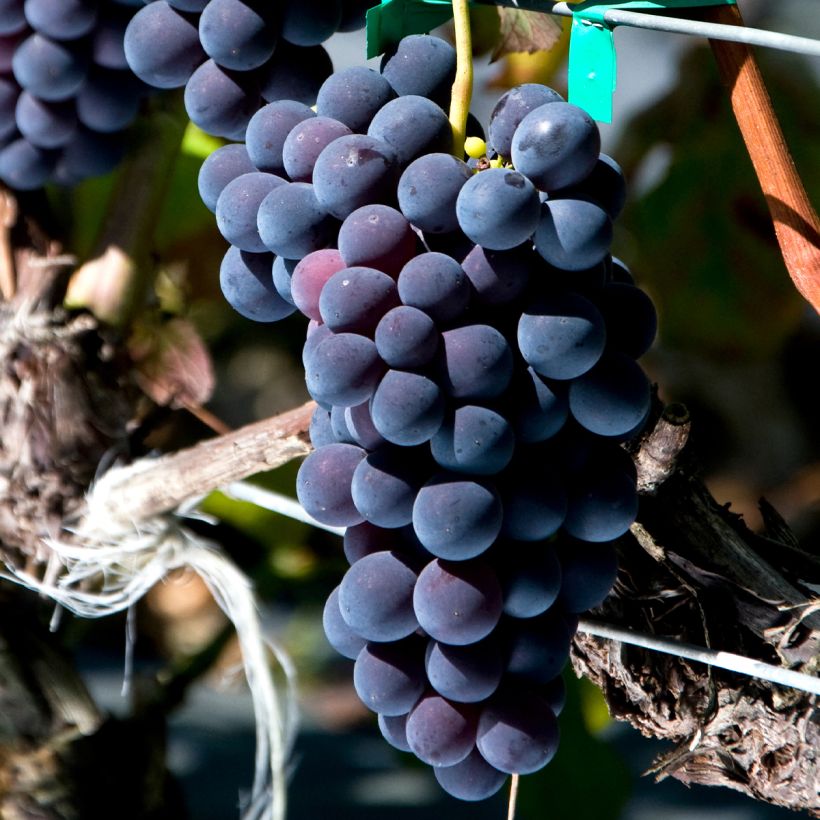

Plant habit
Fruit
Flowering
Foliage
Botanical data
Vitis
vinifera
VENUS®
Vitaceae
Common Grape Vine, European Grape, Wine Grape
Cultivar or hybrid
Other Grapevines
View all →Planting and care
Since the devastation caused by phylloxera at the end of the 19th century, the vine is now grafted onto different resistant rootstocks adapted to different types of soil. These rootstocks come from American varieties naturally resistant to this formidable parasite, itself of American origin.
Plant the Venus vine in autumn, in deep, well-drained, even stony, clayey and chalky soil, as the vine is not very demanding in terms of the chemical nature of the soil. It is capable of adapting to moderately acidic soil (up to pH 6 approximately, as below that there are assimilation blockages of certain trace elements), neutral and chalky up to pH 8.5 approximately (it is the excess of active lime that is harmful).
Plant it in a sunny location, sheltered from strong, cold and dry winds. This variety tolerates winter frosts, it is hardy to -20°/-25 °C. Incorporate 3 or 4 handfuls of fertiliser for fruit trees and 2 kg of composted manure for each vine, into the planting soil. Be careful, the roots should not come into contact with the manure. After planting, prune above 2 large buds (buds) to obtain two branches. Keep the most vigorous one and tie it to a stake. This will be followed by training pruning.
The vine does not require regular fertilisation for good yield, on the contrary. In overly rich soil, vegetation (leaves) will develop at the expense of fruiting. Enrich the soil with potash, bonemeal or iron chelate, only every 2-3 years.
This vine is highly resistant to diseases.
Planting period
Intended location
Care
Planting & care advice
-
, onOrder confirmed
Reply from on Promesse de fleurs
Similar products
Haven't found what you were looking for?
Hardiness is the lowest winter temperature a plant can endure without suffering serious damage or even dying. However, hardiness is affected by location (a sheltered area, such as a patio), protection (winter cover) and soil type (hardiness is improved by well-drained soil).

Photo Sharing Terms & Conditions
In order to encourage gardeners to interact and share their experiences, Promesse de fleurs offers various media enabling content to be uploaded onto its Site - in particular via the ‘Photo sharing’ module.
The User agrees to refrain from:
- Posting any content that is illegal, prejudicial, insulting, racist, inciteful to hatred, revisionist, contrary to public decency, that infringes on privacy or on the privacy rights of third parties, in particular the publicity rights of persons and goods, intellectual property rights, or the right to privacy.
- Submitting content on behalf of a third party;
- Impersonate the identity of a third party and/or publish any personal information about a third party;
In general, the User undertakes to refrain from any unethical behaviour.
All Content (in particular text, comments, files, images, photos, videos, creative works, etc.), which may be subject to property or intellectual property rights, image or other private rights, shall remain the property of the User, subject to the limited rights granted by the terms of the licence granted by Promesse de fleurs as stated below. Users are at liberty to publish or not to publish such Content on the Site, notably via the ‘Photo Sharing’ facility, and accept that this Content shall be made public and freely accessible, notably on the Internet.
Users further acknowledge, undertake to have ,and guarantee that they hold all necessary rights and permissions to publish such material on the Site, in particular with regard to the legislation in force pertaining to any privacy, property, intellectual property, image, or contractual rights, or rights of any other nature. By publishing such Content on the Site, Users acknowledge accepting full liability as publishers of the Content within the meaning of the law, and grant Promesse de fleurs, free of charge, an inclusive, worldwide licence for the said Content for the entire duration of its publication, including all reproduction, representation, up/downloading, displaying, performing, transmission, and storage rights.
Users also grant permission for their name to be linked to the Content and accept that this link may not always be made available.
By engaging in posting material, Users consent to their Content becoming automatically accessible on the Internet, in particular on other sites and/or blogs and/or web pages of the Promesse de fleurs site, including in particular social pages and the Promesse de fleurs catalogue.
Users may secure the removal of entrusted content free of charge by issuing a simple request via our contact form.
The flowering period indicated on our website applies to countries and regions located in USDA zone 8 (France, the United Kingdom, Ireland, the Netherlands, etc.)
It will vary according to where you live:
- In zones 9 to 10 (Italy, Spain, Greece, etc.), flowering will occur about 2 to 4 weeks earlier.
- In zones 6 to 7 (Germany, Poland, Slovenia, and lower mountainous regions), flowering will be delayed by 2 to 3 weeks.
- In zone 5 (Central Europe, Scandinavia), blooming will be delayed by 3 to 5 weeks.
In temperate climates, pruning of spring-flowering shrubs (forsythia, spireas, etc.) should be done just after flowering.
Pruning of summer-flowering shrubs (Indian Lilac, Perovskia, etc.) can be done in winter or spring.
In cold regions as well as with frost-sensitive plants, avoid pruning too early when severe frosts may still occur.
The planting period indicated on our website applies to countries and regions located in USDA zone 8 (France, United Kingdom, Ireland, Netherlands).
It will vary according to where you live:
- In Mediterranean zones (Marseille, Madrid, Milan, etc.), autumn and winter are the best planting periods.
- In continental zones (Strasbourg, Munich, Vienna, etc.), delay planting by 2 to 3 weeks in spring and bring it forward by 2 to 4 weeks in autumn.
- In mountainous regions (the Alps, Pyrenees, Carpathians, etc.), it is best to plant in late spring (May-June) or late summer (August-September).
The harvesting period indicated on our website applies to countries and regions in USDA zone 8 (France, England, Ireland, the Netherlands).
In colder areas (Scandinavia, Poland, Austria...) fruit and vegetable harvests are likely to be delayed by 3-4 weeks.
In warmer areas (Italy, Spain, Greece, etc.), harvesting will probably take place earlier, depending on weather conditions.
The sowing periods indicated on our website apply to countries and regions within USDA Zone 8 (France, UK, Ireland, Netherlands).
In colder areas (Scandinavia, Poland, Austria...), delay any outdoor sowing by 3-4 weeks, or sow under glass.
In warmer climes (Italy, Spain, Greece, etc.), bring outdoor sowing forward by a few weeks.






























